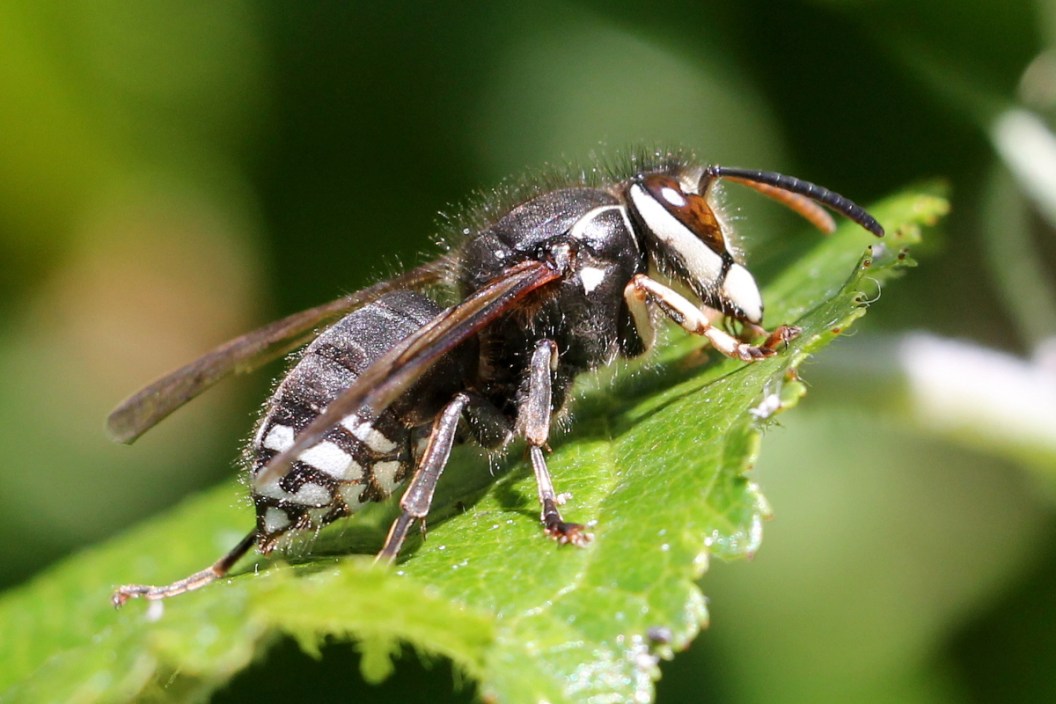In the vast tapestry of nature’s wonders, few creatures elicit as much intrigue and trepidation as the bald-faced hornet. Often shrouded in myth and misinterpretation, this industrious insect offers invaluable ecological contributions while simultaneously guarding its reputation with a fierce demeanor. This week’s exploration of the bald-faced hornet unveils not merely its biological attributes but also its role within the broader ecosystem, providing insights that extend beyond surface-level perceptions.
The bald-faced hornet (Dolichovespula maculata) stands out with its distinctive appearance—a striking contrast of black and white that sets it apart from its yellow-jacket cousins. This species is renowned for its aggressive tendencies, especially when provoked or threatened. Characteristically, the hornet boasts a robust physique and a pointed tail, allowing it to defend its territory with resounding efficacy. These remarkable adaptations come with an inherent responsibility, as the bald-faced hornet serves as both predator and prey within its ecological niche.
Widely distributed across North America, the bald-faced hornet thrives in various habitats, ranging from woodlands to suburban backyards. As a social wasp, this species constructs elaborate nests, often resembling oversized paper lanterns. A common misconception is that all wasps are mere nuisances; however, bald-faced hornets play a pivotal role in maintaining ecological balance. By preying on aphids, caterpillars, and other herbivorous insects, they regulate populations that could otherwise devastate plant life. This predatory behavior positions them as key players in pest management.
Nests are constructed primarily by female hornets, who secrete a papery substance derived from chewed wood fibers mixed with saliva. The resultant structure serves not only as a home but also as a fortress, demonstrating the hornets’ industriousness and engineering prowess. These nests can contain hundreds of individuals, with a single colony typically comprising a queen, numerous workers, and seasonal males. The organization within the colony is a testament to their social structure, as each member plays a unique role in sustaining the community.
Understanding the life cycle of the bald-faced hornet further illuminates its significance. The colony begins anew each spring, initiated by a fertilized queen emerging from hibernation. This marked transition lays the groundwork for a thriving community, as the queen establishes a nest and lays eggs. As the warmer months progress, the colony burgeons, reaching its peak population in late summer. During this time, hornets are most active and territorial, which can lead to increased encounters with humans. It is essential to approach these interactions with caution and respect, recognizing the hornet’s role within its environment.
While the bald-faced hornet elicits fear due to its painful sting, it is essential to approach such encounters with education rather than antagonism. Many people erroneously conflate hornets with a desire to attack; in reality, these creatures are driven by instinct to protect their queen and nest. Understanding this behavior can mitigate unwarranted fear and foster a more harmonious coexistence. In instances where a nest poses a genuine threat, professionals should be consulted to ensure safe removal without unnecessary harm to these vital insects.
Moreover, the bald-faced hornet’s ecological contributions extend beyond pest control. Their predatory nature ensures the stability of various food webs, impacting not just their immediate environment but the larger biotic community. Pollination, although not their primary activity, occurs incidentally as they traverse flowers in search of nectar, contributing to the reproductive success of numerous plant species. Thus, far from being a mere pest, the bald-faced hornet is an integral component of the ecosystem, deserving both respect and understanding.
As the seasons change and autumn approaches, the life cycle of bald-faced hornets culminates in an intriguing phenomenon. With winter looming, the cold prompts the demise of the workers, while the fertilized queens seek shelter to hibernate, ensuring the survival of the species. This cyclical nature serves as a reminder of the impermanence that governs all life in nature. When observing these resilient insects, one cannot help but ponder the interconnectedness of all living beings and the delicate balance that sustains ecosystems.
In conclusion, the bald-faced hornet exemplifies nature’s duality—an entity that is both feared and necessary. Its role as a predator underscores the importance of biodiversity in maintaining ecological equilibrium. As we navigate our environments, an awareness of the significance of creatures like the bald-faced hornet can reshape our perceptions, inviting a deeper appreciation for the complex relationships that define the natural world. By embracing knowledge over fear, we foster a connection to the intricate web of life that surrounds us, acknowledging that every species, regardless of its reputation, has a purpose in the grand narrative of existence.









Leave a Comment